First report of Phoma terrestris causing pink root rot of Chinese onion in Vietnam
T. M. Luong A , L. M. T. Huynh A , U. Tran A , V. T. Dau B , L. W. Burgess C , H. T. Phan D F , M. M. Aveskamp E and A. D. Vo AA Quang Nam Plant Protection Sub-Department, Tam Ky, Quang Nam, Vietnam.
B Nghe An Plant Protection Sub-Department, Vinh, Nghe An, Vietnam.
C Faculty of Agriculture, Food and Natural Resources, The University of Sydney, NSW 2006, Australia.
D National Institute of Medicinal Materials, Hanoi, Vietnam.
E CBS Fungal Biodiversity Centre, PO Box 85167, 3508 AD Utrecht, The Netherlands.
F Corresponding author. Email: phanthuyhien@yahoo.com
Australasian Plant Disease Notes 3(1) 147-149 https://doi.org/10.1071/DN08057
Submitted: 26 August 2008 Accepted: 5 November 2008 Published: 20 November 2008
Abstract
Typical symptoms of pink root rot were observed in Chinese onions in Quang Nam and Nghe An provinces in Vietnam in 2007. The pathogen recognised as the cause of pink root rot in onions, Phoma terrestris, was isolated from diseased roots. This is the first report of pink root rot and P. terrestris in Vietnam.
The cause of stunting and yellowing in some crops of Chinese onions (oriental onions, rakkyo) (Allium chinense) (Figs 1 and 2) in Binh Phuc Commune, Thanh Binh District, Quang Nam Province, in January 2007 was investigated. The crops were growing in sandy soil in old sand dunes within 5 km of the coast. The problem was most obvious in poorly drained areas. Pink roots (Figs 3 and 4) were evident on all diseased plants and on many otherwise symptomless plants indicating that the disease symptoms were similar to pink root rot of onion, Allium cepa, caused by Phoma terrestris (Schwartz and Mohan 2008). In addition, pycnidia, typical of Phoma were present on some of the pink roots.
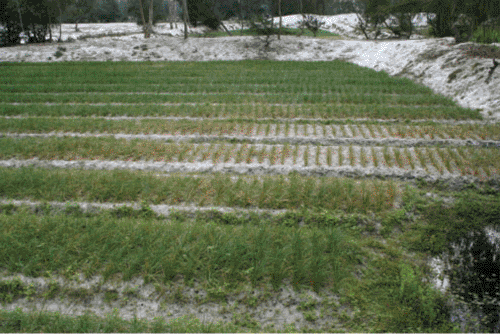
|
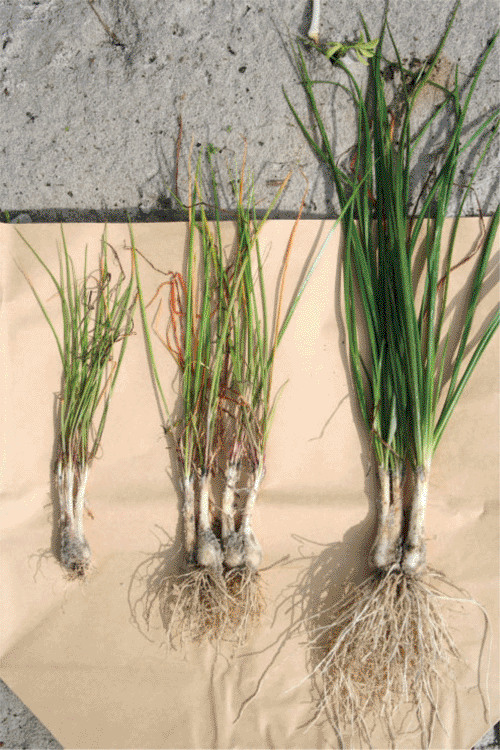
|
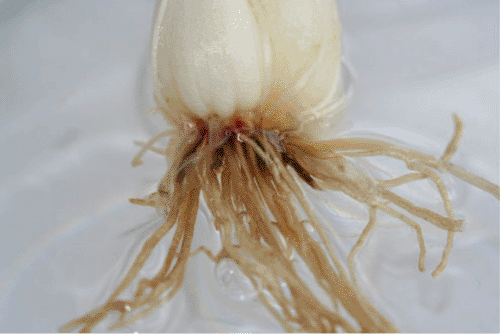
|
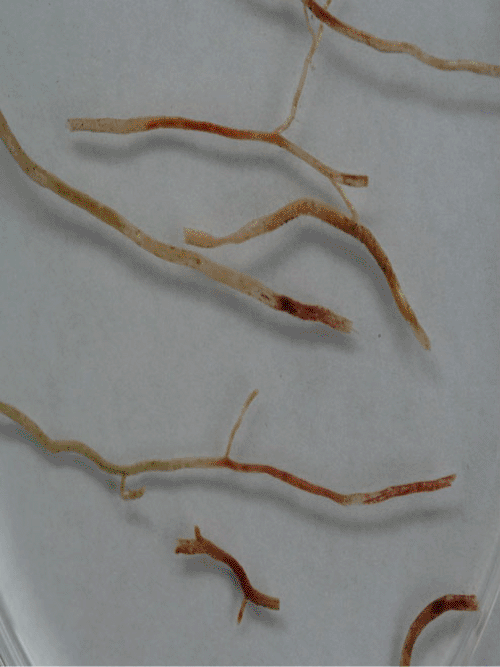
|
Samples of diseased plants were collected and taken to the laboratory for isolation and identification of the causal organism of the disease symptoms, using the procedures described in Burgess et al. (2008).
Samples of pink roots were washed in tap water, surface sterilised in 70% ethyl alcohol for 5 s, immediately rinsed in sterile water and damp-dried on sterile paper tissues. Sections of root (2–3 mm) were removed from the margin of diseased and symptomless tissue and plated on water agar containing streptomycin sulfate (1.0 g/L) and neomycin sulfate (0.12 g/L). Colonies that developed from the sections were transferred to carnation leaf-piece agar (CLA), and then purified by single spore transfer to CLA and potato dextrose agar (PDA), using conidia from pycnidia on the original CLA plate. Typical colonies of P. terrestris developed on PDA (Fig. 5). Abundant pycnidia, also typical of the species, formed on the leaf pieces on CLA (Fig. 6).
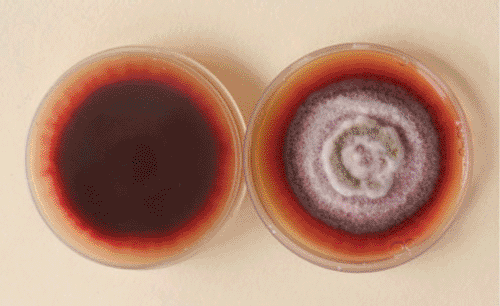
|
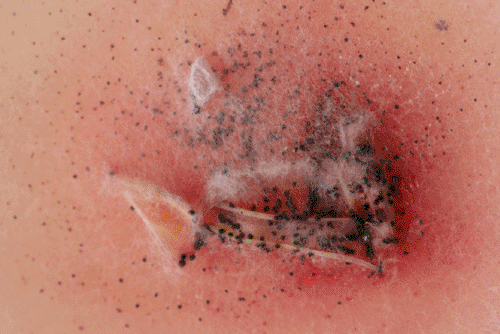
|
Subsequently, we found pink root rot in Chinese onions in Quynh Luong commune, Quynh Luu district in Nghe An province, in crops on sandy coastal soil. Putative cultures of P. terrestris were isolated from pink roots from a composite sample from several crops. One culture from Quang Nam (QN32) and one from Nghe An (NA1) were forwarded to the CBS Fungal Biodiversity Centre, where the identification was confirmed according to the culturing and morphological methods for Phoma as described by Boerema et al. (2004). In addition to the obvious red pigment produced in cultures, microscopical studies revealed typical setose pycnidia and conidia, being 4.5–6 × 2–2.5 μm with 2–5(–7) large guttules as are described by de Gruyter and Boerema (2002). Subsequently cultures QN32 and NA1 were accessioned as CBS 122483 and CBS 122484, respectively.
Pathogenicity tests were not undertaken, as no uninfected source of planting material was available. Although the role of P. terrestris as the cause of pink root rot in onions is well documented (Schwartz and Mohan 2008), this is the first report of pink root rot of Chinese onions and of P. terrestris occurring in Vietnam. It is likely that the fungus is widely distributed given it has a wide host range (Schwartz and Mohan 2008). Further studies on the distribution and role of this pathogen in Vietnam are warranted.
Acknowledgements
The authors gratefully acknowledge financial support from the Australian Centre for International Agricultural Research.
de Gruyter J, Boerema GH
(2002) Contributions towards a monograph of Phoma (Coelomycetes)—VIII. Section Paraphoma: Taxa with setose pycnidia. Persoonia 17, 541–561.



